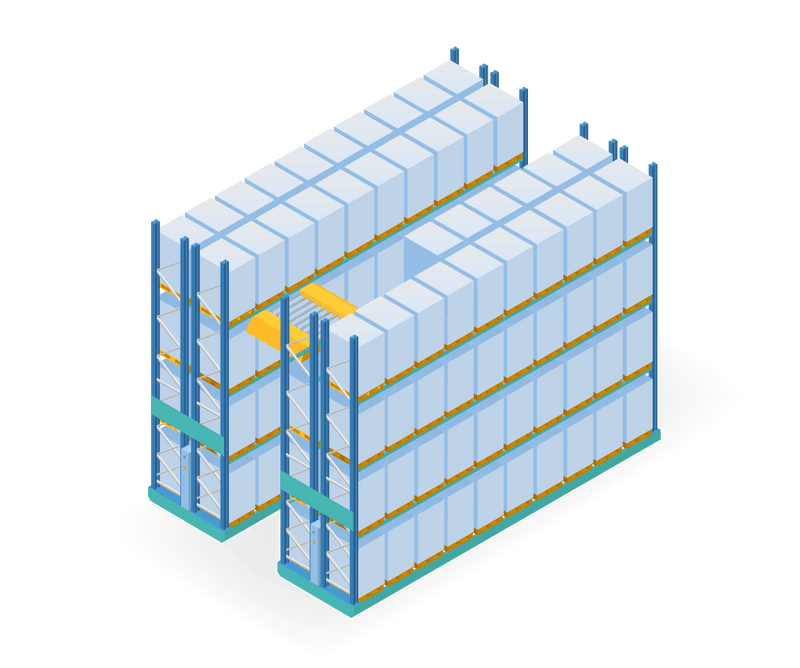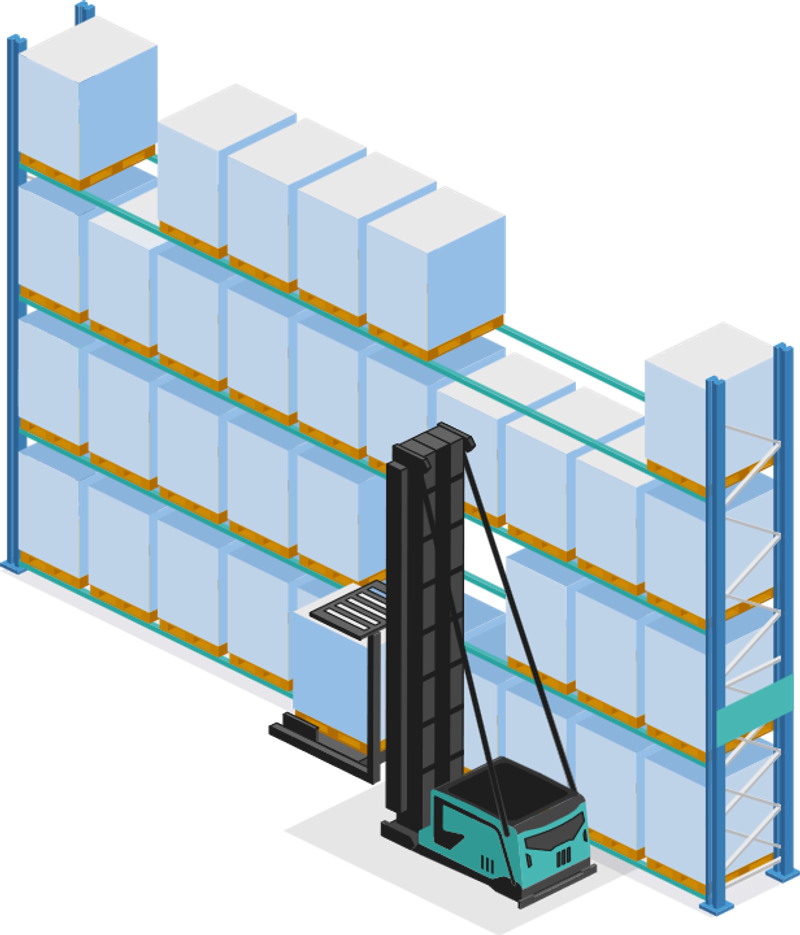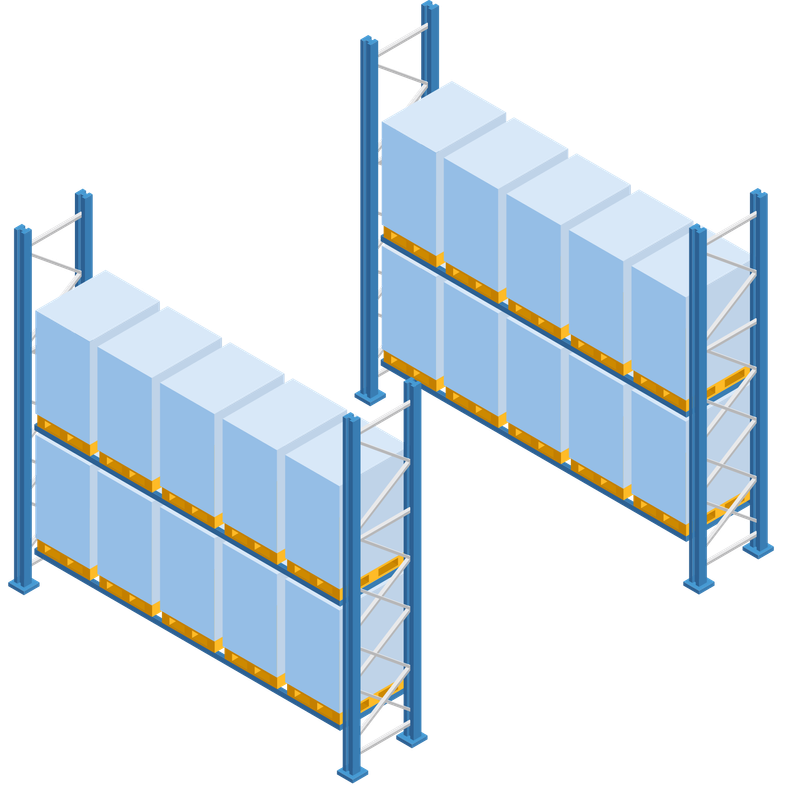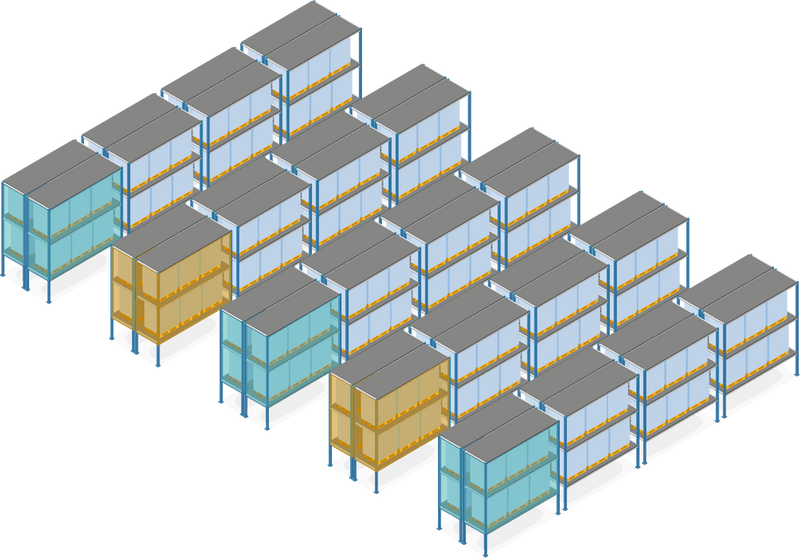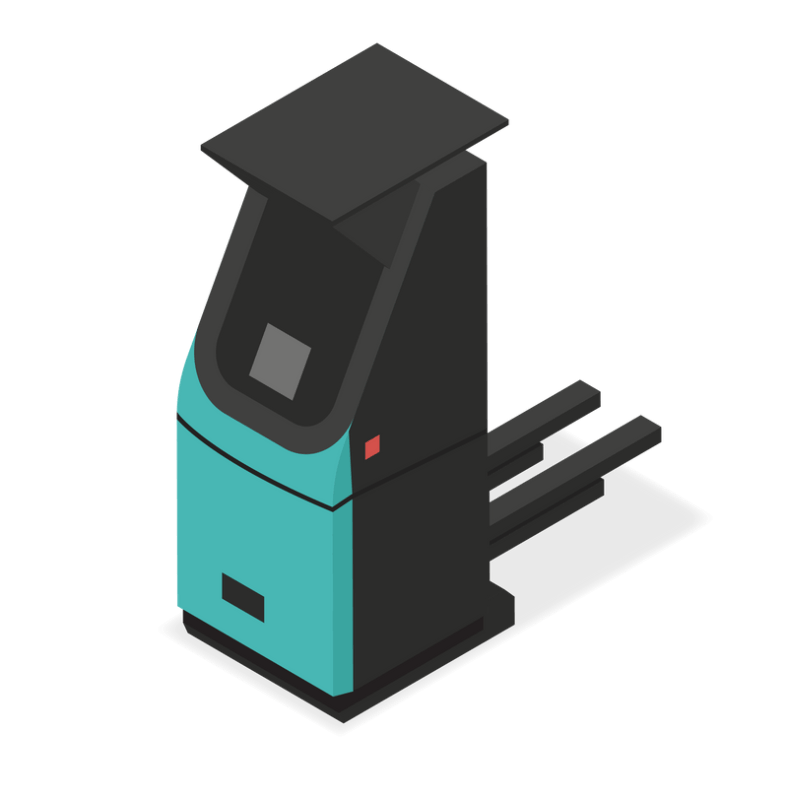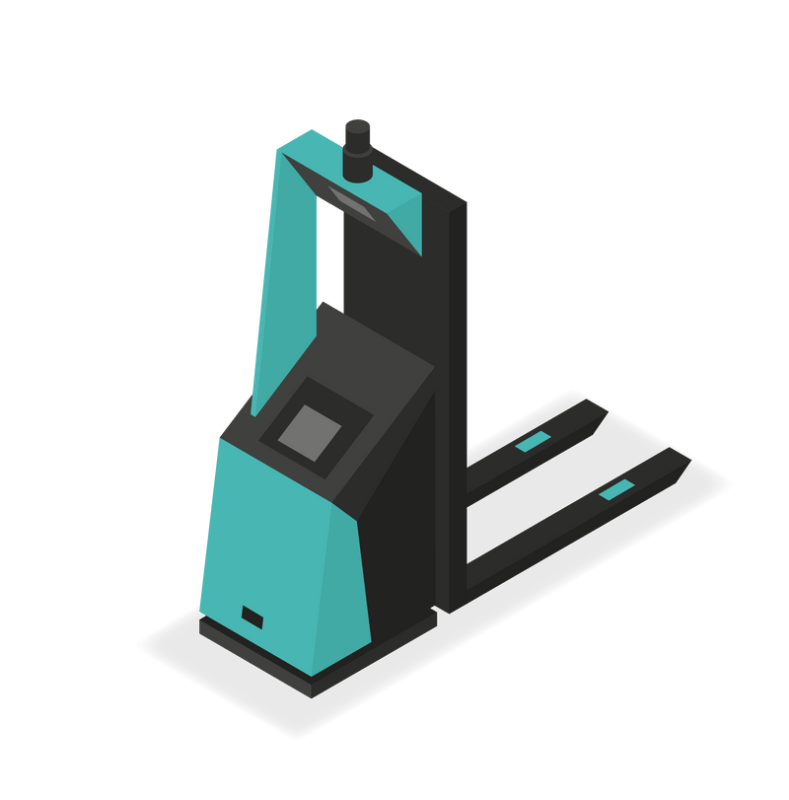Structure of the Drive-In Rack
Drive in racking is usually very simple in design and consists of the same components as normal pallet racking. Instead of normal racking bays, drive in racking has channels along the aisles where pallets can be stored several depths deep. In these channels, angle profiles are bolted to the rack uprights, which extend over the full depth of the channels. Pallets can be placed on these angles and stacked on top of each other. This enables pressure-free storage in both height and depth. Drive in racking is usually operated by a forklift or reach truck. It is driven into the channels to store and retrieve pallets, and the pallets are placed on or removed from the angles at the appropriate level.
-800x800.png)
